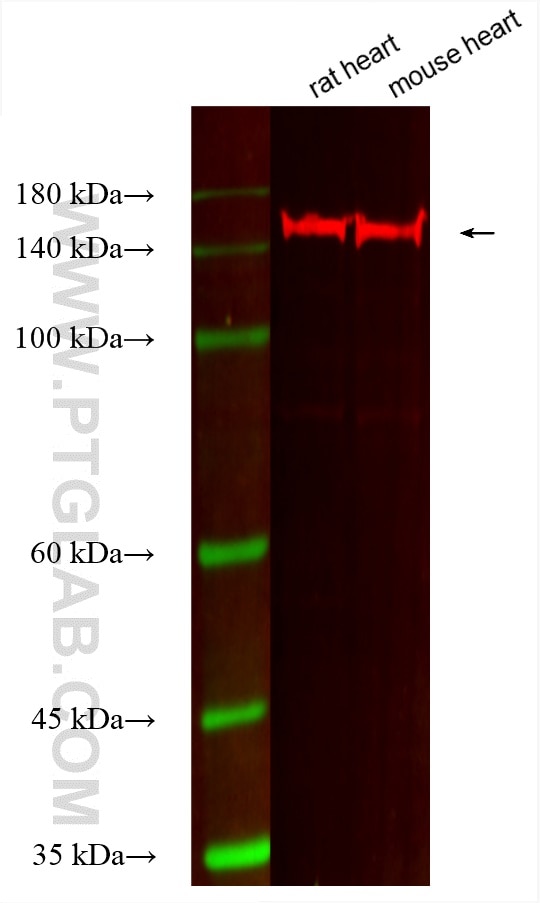Tested Applications
| Positive WB detected in | rat heart tissue, mouse heart tissue |
Recommended dilution
| Application | Dilution |
|---|---|
| Western Blot (WB) | WB : 1:2000-1:16000 |
| It is recommended that this reagent should be titrated in each testing system to obtain optimal results. | |
| Sample-dependent, Check data in validation data gallery. | |
Product Information
CL594-67608 targets MYBPC3 in WB applications and shows reactivity with Human, mouse, rat, pig samples.
| Tested Reactivity | Human, mouse, rat, pig |
| Host / Isotype | Mouse / IgG1 |
| Class | Monoclonal |
| Type | Antibody |
| Immunogen | MYBPC3 fusion protein Ag15848 Predict reactive species |
| Full Name | myosin binding protein C, cardiac |
| Calculated Molecular Weight | 1274 aa, 141 kDa |
| Observed Molecular Weight | 140-150 kDa |
| GenBank Accession Number | BC151211 |
| Gene Symbol | MYBPC3 |
| Gene ID (NCBI) | 4607 |
| RRID | AB_3673521 |
| Conjugate | CoraLite®594 Fluorescent Dye |
| Excitation/Emission Maxima Wavelengths | 588 nm / 604 nm |
| Form | Liquid |
| Purification Method | Protein G purification |
| UNIPROT ID | Q14896 |
| Storage Buffer | PBS with 50% glycerol, 0.05% Proclin300, 0.5% BSA, pH 7.3. |
| Storage Conditions | Store at -20°C. Avoid exposure to light. Stable for one year after shipment. Aliquoting is unnecessary for -20oC storage. |
Background Information
MYBPC3 belongs to the immunoglobulin superfamily and MyBP family. MYBPC3 located in the crossbridge region of vertebrate striated muscle a bands. In vitro it binds MHC, F-actin and native thin filaments, and modifies the activity of actin-activated myosin ATPase. It may modulate muscle contraction or may play a more structural role. Defects in MYBPC3 are the cause of cardiomyopathy familial hypertrophic type 4 (CMH4).
Protocols
| Product Specific Protocols | |
|---|---|
| WB protocol for CL594 MYBPC3 antibody CL594-67608 | Download protocol |
| Standard Protocols | |
|---|---|
| Click here to view our Standard Protocols |



